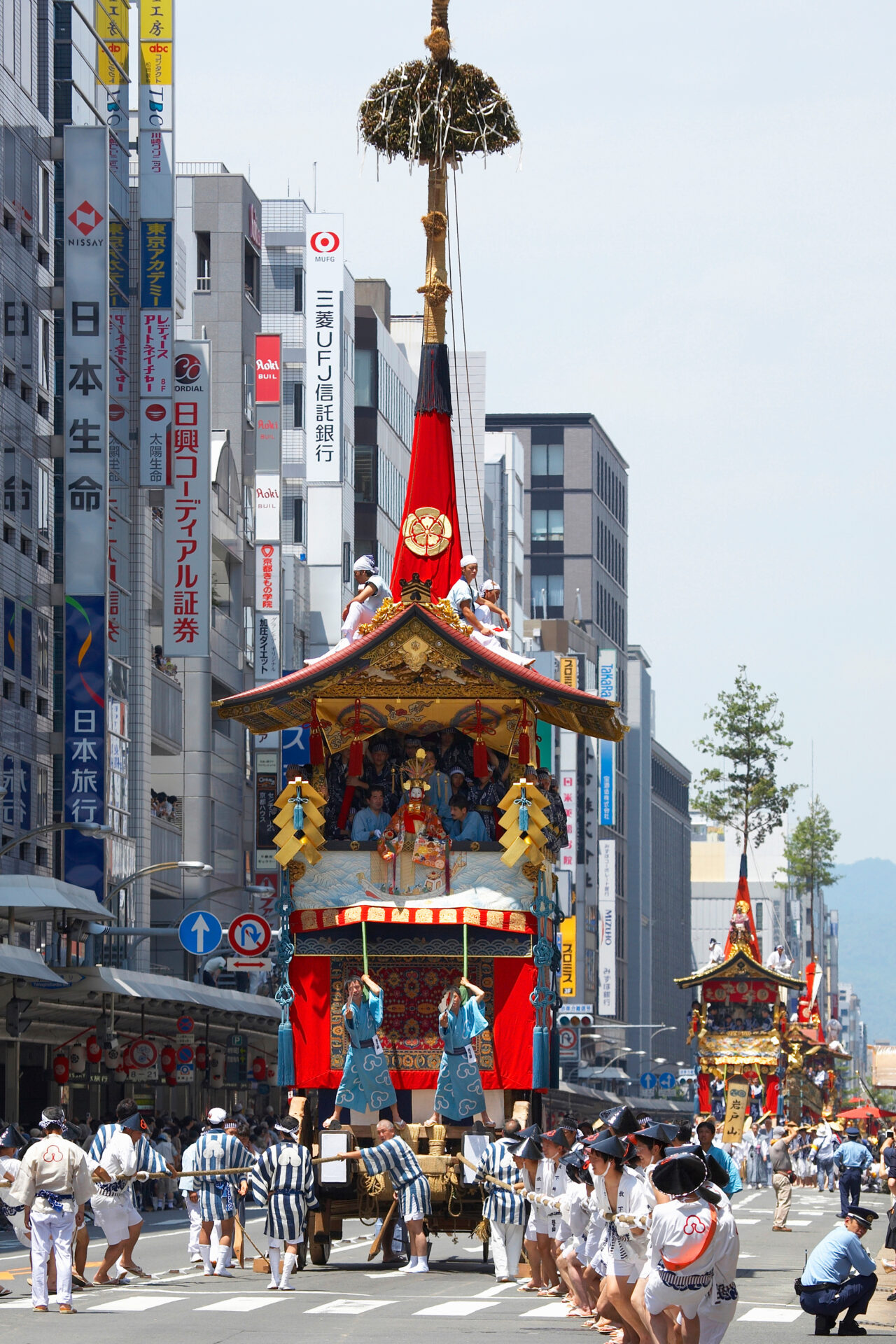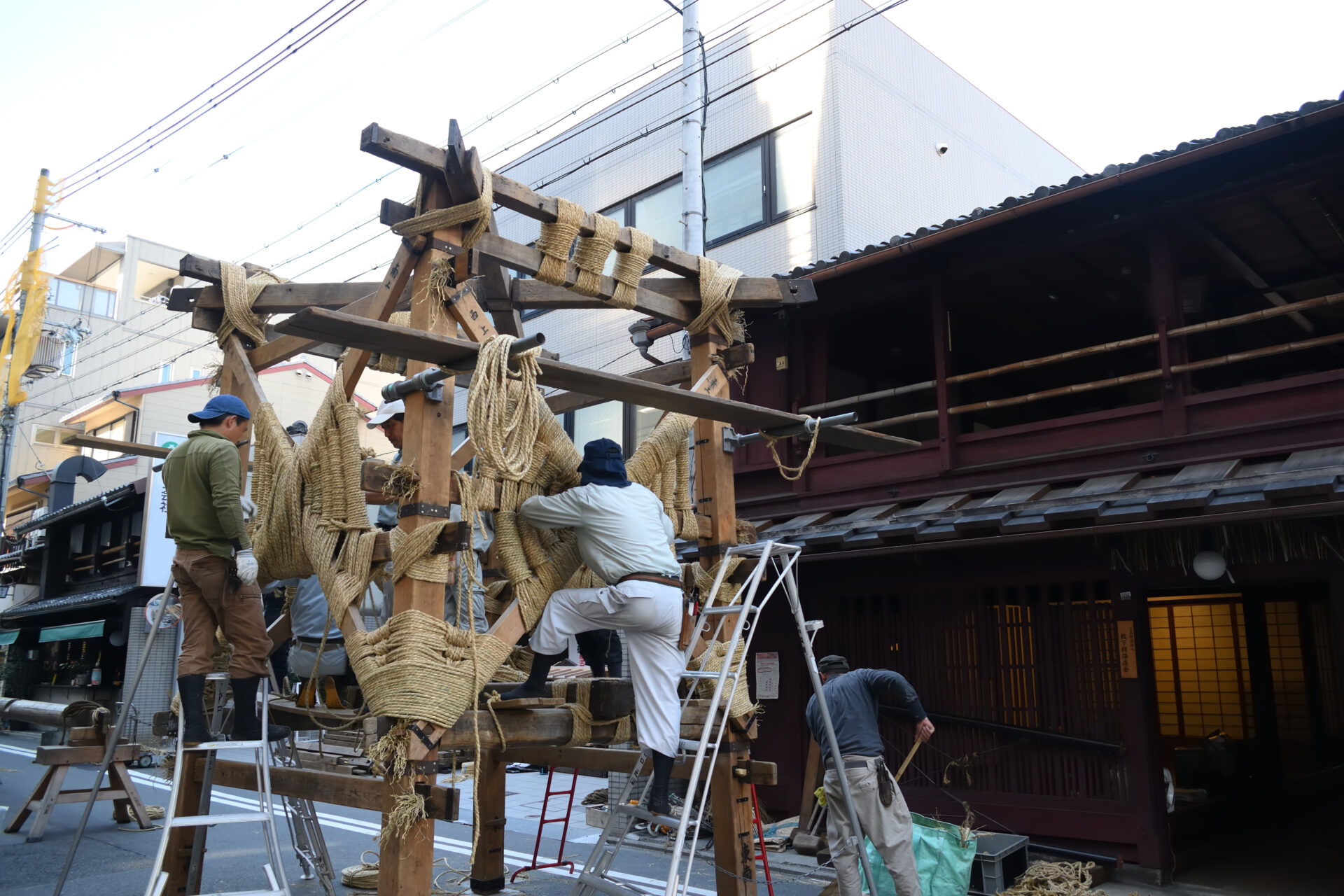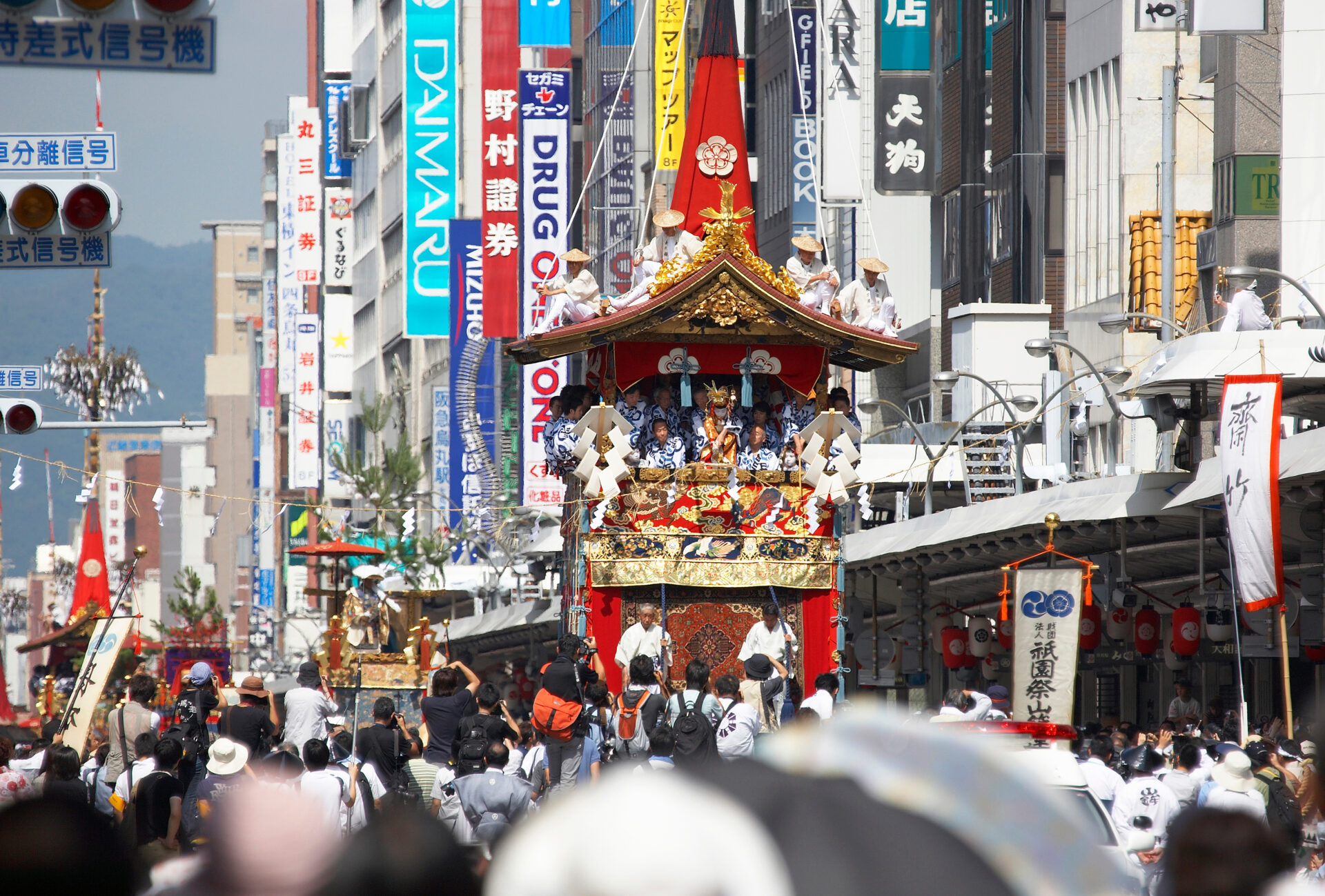[Kyoto's Three Major Festivals] Gion Festival
Cultural Tourism ContentSustainability
The Origins of the Yama-Hoko Events of the Gion Festival
The origins of the Gion Festival, which is a religious observance of Yasaka Jinja Shrine, go back to the formation of the Gion Goryo-e, the Gion Ghost Ritual (ghost=evil spirit). In 869 the whole country of Japan was suffering from a plague, so in order to drive away the plague, 66 spears representing the 66 kuni, or provinces, making up Japan at that time, were offered as prayers to the god Gozu Tenno. This is said to be the origin of the Gion Festival. From the year 970 the Gion Goryo-e Ritual became an annual event. From that time through the end of the Heian Period(794-1185) the ritual started to transform into a festival for large numbers of people, and during the Muromachi Period (1336-1573) the Yama-Hoko floats which can be seen in the present-day Gion Festival began to appear. It is said that as far as the middle of the 15th century, the number of floats reached 58 and many of them had the same desigh as the current Yama-Hoko floats. However, the history of the Yama-Hoko Junko Procession was filled with disaster and then reconstruction.
During the Onin War (1467-1477), many of the Yama-Hoko floats, along with much of the city of Kyoto, were destroyed in the conflagrations caused by the war. In 1500, twenty-three years after the end of the Onin War, most of the floats were restored by the residents of the Yama-Hoko-cho float districts, led by rich merchants (choshu in Japanese). Accordiong the the official records of Yasaka Jinja Shrine, 26 of the Yama-Hoko floats made up the Saki-Matsuri (Early Procession) and 10 made up the Ato-Matsuri (Latter Procession) at that time. This is said to be the origins of the present-day Gion Festival.
Although three great conflagrations, the Hoei-no-Taika(1708), the Tenmei-no-Taika(1788), and the Hamagurigomon-no-Hen(1864), destroyed many of the floats, they were restored each time by the people of the Yama-Hoko-cho districts and display this resilience in their present form.
Source: Gion Festival Official Guidebook
Features of this Plan
Yama-Hoko Construction

Every year from the tenth to the fourteenth of July in the Early Festival, from the eighteenth to the twenty-first of July in the Latter Festival this work is carried out on the hoko- and Hikiyama-style floats. Simply speaking, battens and crossbeams are bound onto four standing poles to create the body of the float, but the placement and angle of these differs from district to district, and each float has its own distinctive form.The traditional method of securing these beams to each other with straw rope(Nawagarami) is famous, since not one nail is used in the entire process.The exceptional nature of the rope-binding process is that it enables the float to absorb all the shaking and bending that occurs during the float procession.After the Yama-Hoko have been constructed, they are taken on a test run "Hikizome" throught the districts, with the chorus leaders (Ondotori) and orchestras (Hayashi-kata) aboard in full ceremonial attire.It is said that those who pull the ropes during the test run are protected from harm for a year, and it is only at this time that women and children are allowed to help pull the floats.
Yoi-Yama Procession Eve

In days of old, the day was held to begin at sunset. Therefore, to put this in modern perspective, the day of the festival was thought to have already begun on the evening of the previous day;You can view the mountains and floatsand this was called Yoi-Yama, or procession eve.Procession eve is the time during the Gion Matsuri when flames are lit in the decorative komagata lantern of each Yama-Hoko, and the Yama-Hoko are beautifully bedecked with their figures, tapestries and metal fittings. One can hear the voices of the children who sell protective charms singing their children's songs, dressed in their Yukata style. It is now that the festival spirit reaches its height. The 16th in the Early Festival and the 23rd in the Latter Festival are the actual date of Yoi-Yama, but in recent years the term has been extended to include from the 14th to 16th in the Early Festival, and from the 21st to 23rd in the Lattern Festival as well.
Yama-Hoko Junko Procession

Saki Matsuri (Early) Procession : July 17th
Ato Matsuri (Latter) Procession : July 24th
The Gion chant of Kon-chiki-chin echoes through the summer sky,the highlight of the Gion Matsuri Festival is the Yama-Hoko Junko Procession, where floats pass through the streets.The Saki Matsuri (Early) procession starts from Shijo Karasuma, and the Ato Matsuri (Latter) procession from Karasuma Oike. There are many highlights, such as the "Kuji-aratame" to confirm the order of the parade, and the dynamic "Tsuji-mawashi" (turning the float). A magnificent and spectacular pageant unfolds, also known as a "moving art museum."
*Seats on Oike-dori Street must be reserved in advance.
Usage overview
- Available area
Various plans for 2025 are introduced on LINK KYOTO.
LINK KYOTO will continue to contribute to the preservation of culture and traditions.







 Kyoto
experience
Kyoto
experience Contact us by phone
Contact us by phone Contact by email
Contact by email